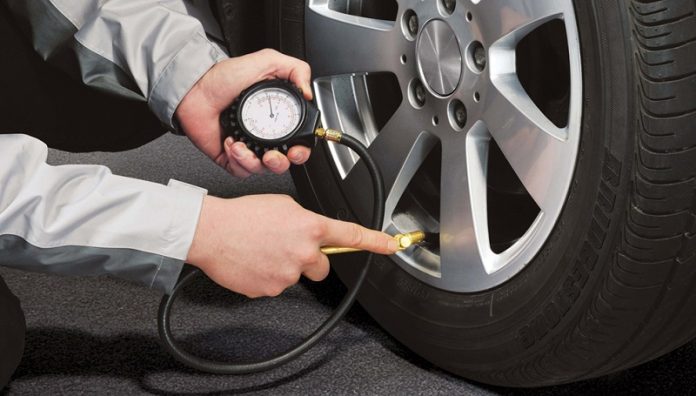The answer to this depends on a variety of factors including the type of driving patterns, size and load on tires and if you prefer fuel economy over a smoother ride. The recommended inflation pressures are generally mentioned by the vehicle manufacturer on a decal on the door jam or in the glove box, and should be followed for the most part. These recommendations may sometimes not be accurate considering the change in brands of tires and types, but are overall the best advice for all-round driving.
The common PSI (pounds per square inch) is 27 to 32 for most passenger minivans, mini-pickups and cars, while the recommended intake for full-size SUV’s and pickups is somewhere in the range of 5 – 8 PSI higher to accommodate the extra weight and size. Speaking of tire pressures, it is important to note that they may differ from front to rear tires. Car experts claim that adding a couple extra pounds of pressure results in better fuel economy as the rolling resistance of the tires is decreased, but this may also be a downside as it makes the tires harder and somewhat takes away from the smooth rolling action on the road.
If you tend to carry extra cargo, carpool, towing a trailer, then it is recommended that you add a few extra pounds of pressure to the rear tires only to offset the extra weight. It is important to note that whenever you add extra pressure in the above circumstances, do not exceed the level indicated by the tire manufacturer, which is the maximum the tire is designed for and is printed on the sidewall. Adding the extra pounds past the manufacturer’s recommendation could result in tire failure and damage.
Checking your tires regularly is important simply because tires leak air and fast. Common air loss in regular driving is approximately a half pound a month, and if you’re notice more than this, then you need probable have a leak in the rim. For this reason, it is important to check your tires well ahead of long trips and at least once a month. The best time to check your tires is in the morning or when they are cold. When the tires are hot, the air inside tends to expand result in higher readings than normal pressure.
Internal tire pressure is also affected by the outside temperatures, where cold weather lowers it and hot weather increases it. So you may have to increase or decrease the PSI by a few notches depending on seasonal variations. Although checking your tires for air pressure is relatively easy, it is important to use accurate gauges, and avoid relying completely on gas stations gauges such as air hoses or compressors. Adding to this, do not measure air pressure by eye, because tires wells especially radial tires wells on radial tires tend to swell up even when the tire is fully inflated.
If you continue to add air even thought the tire has been inflated completed, it will be overinflated and result in unforeseeable damage. However, this doesn’t mean that you wait until the tires are near flat to add air as this may result in damage as well. Increasing or decreasing tire pressure in a vehicle is a serious maintenance task, and if you’re unsure or unaware of the procedure, its best left to the professionals.





